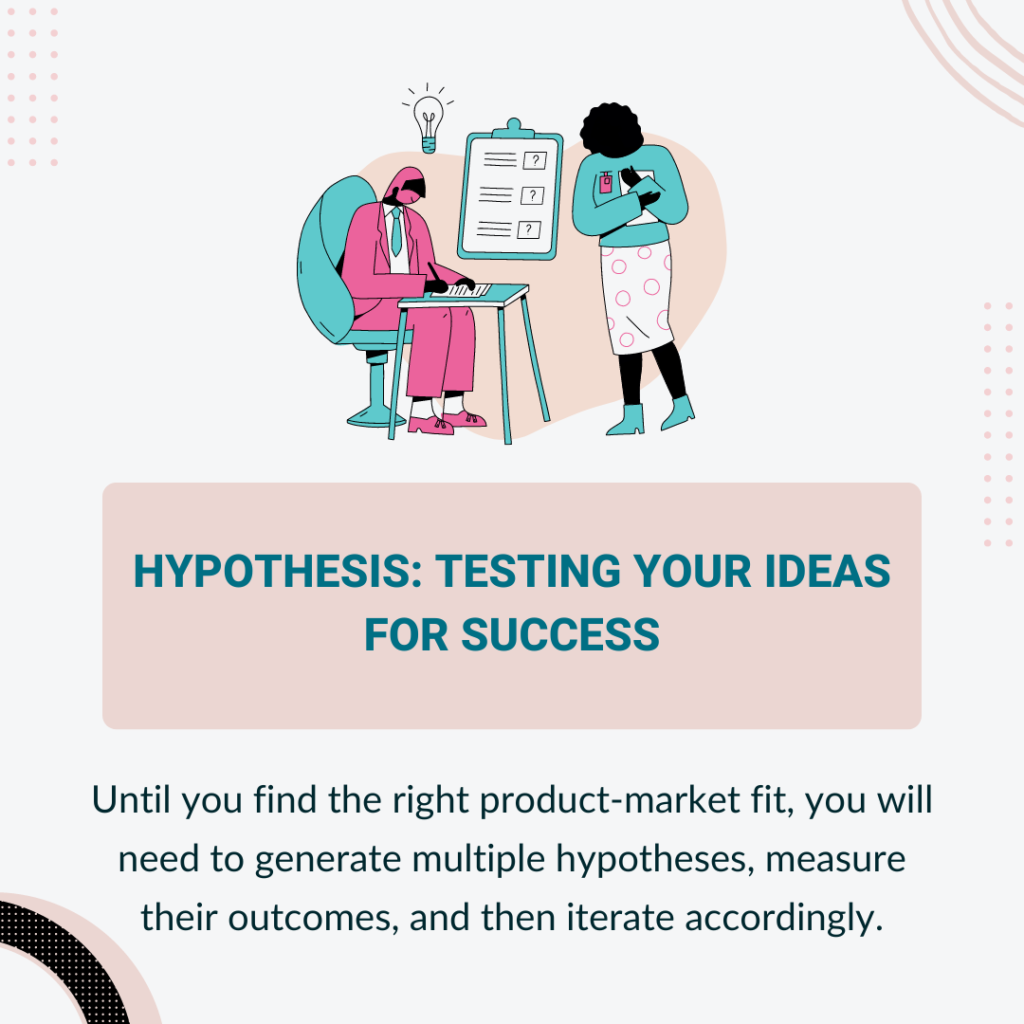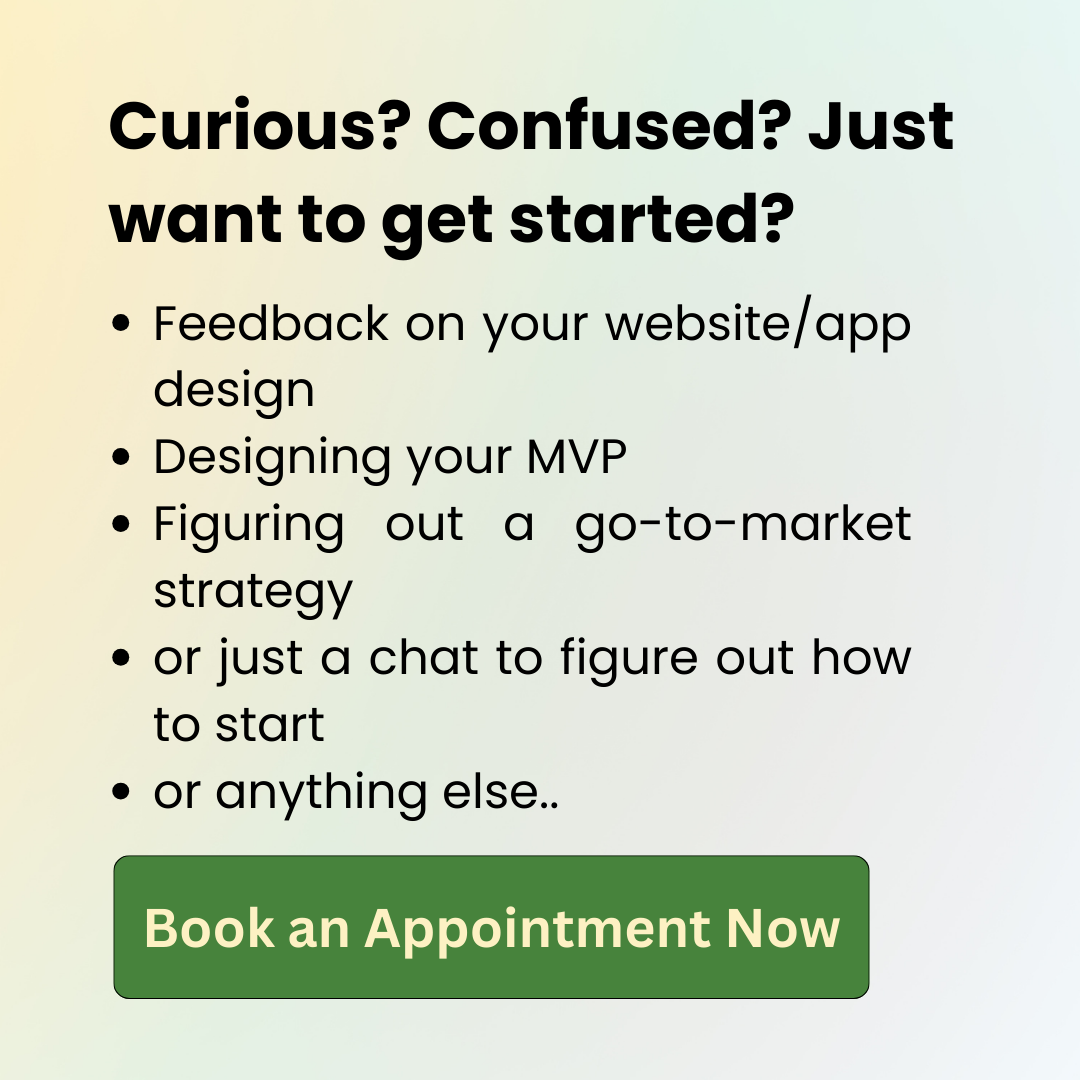In my article, “Building the Core Feature Set with Design Thinking,” I discussed the process of identifying the core features for your Minimum Viable Product (MVP). Now, let’s dive into the exciting part—building the MVP itself and keeping your startup lean and focused.
Why is building an MVP important? Well, it allows you to test your product hypothesis with real users, gather feedback, and iterate based on their needs. It’s about getting something out there quickly to validate your assumptions and ensure you’re on the right track.

Table of Contents
- Clear Objectives: Setting the Direction for Your MVP
- Avoid Custom Coding: Streamlining Development for Your MVP
- Invest in DIY Tools: Streamlining Your Startup Journey
- Hypothesis: Testing Your Ideas for Success
- The Shortest Route to Go-To-Market: Testing and Advertising
- Audit and Measure: Don’t Forget the Metrics
- Key Performance Indicators (KPIs): Tracking Your Progress
- Business Models: Testing and Monitoring
- Monitoring Your Competition
- Focus on the Vital 20%
- In Conclusion



Clear Objectives: Setting the Direction for Your MVP
When building your Minimum Viable Product (MVP), it’s crucial to have clear objectives set. What is your priority? Are you trying to find out if there is a need for the service? Or will anyone pay for this? Or are users spending time on your app or service? Or are you trying to test specific features? Whatever your intent or objective may be, put it down clearly and start building.
Avoid Custom Coding: Streamlining Development for Your MVP
When it comes to the initial version of your product, I strongly advise against opting for custom coding. Instead, leverage existing tools to build a product that doesn’t require extensive testing. Look for ways to reduce coding and development time, allowing you to quickly test out your concepts. Real-world feedback is incredibly valuable in shaping product development. Fortunately, there are numerous tools available to help you get started. Once you receive validation, you can always consider custom coding. At that point, you’ll have a clear reference of what needs to be built.



Invest in DIY Tools: Streamlining Your Startup Journey

To expedite your progress, focus on getting things done quickly rather than nitpicking every detail. Don’t get overly fixated on branding at this stage. Utilize online tools to generate a logo that is presentable, knowing that you can always refine it once your product receives validation. While it’s important to avoid being subpar, leverage tools to create a decent logo and save your energy for more critical battles.
The same principle applies to graphic design. Prioritize ease of use over aesthetics, unless design is your unique selling proposition. If not, find ways to create something satisfactory without excessive investment in design.
When facing challenges, follow established standards. Don’t waste time reinventing the wheel for aspects that have already been extensively explored and developed. If necessary, launch your product with a minimalistic black and white design, but ensure that it reaches the market.
Templates can be your secret weapon. The market offers a plethora of templates that can save you valuable time and effort. Instead of starting from scratch, consider purchasing templates that can provide you with more than you might initially imagine.
Remember, at this stage, you are testing your idea. It hasn’t fully formed yet. Stay open to iteration and refinement as you gather feedback and insights from your target audience.
Hypothesis: Testing Your Ideas for Success
We often forget that we are working on a hypothesis. Our idea remains just an idea until it actually takes off. Until you find the right product-market fit, you will need to generate multiple hypotheses, measure their outcomes, and then iterate accordingly.
Hypotheses are controlled experiments where we know exactly what we are testing. It’s important not to approach it with an open-ended mindset. If your idea has not been done before (which is highly unlikely) or there are no existing inferences to draw from, then you need to design a series of careful experiments to test your idea out.
While designing these experiments, keep your objective clear and your development cycles short. This allows for quick iteration and learning from each cycle. By embracing an agile and hypothesis-driven approach, you can maximize your chances of discovering what truly resonates with your target audience.
The Shortest Route to Go-To-Market: Testing and Advertising
When you have built a version of your MVP, consider starting to advertise via Google or Facebook ads, depending on the audience you want to target. This approach offers the shortest route to not only reaching the market but also testing your product. After all, you need people to use and provide feedback on your product. By investing a small amount of money in ads, you can gain valuable insights into how your product compares to the competition and gather ideas for marketing strategies and requirements.
Throughout this process, it’s important to remain resilient and not get disheartened. Remember that you are testing your hypothesis to achieve product-market fit. In addition to advertising, continue working on your organic marketing plan, as it often takes time to gain momentum. By combining these approaches, you can gather valuable feedback and refine your product to better align with the needs and preferences of your target audience.



Audit and Measure: Don’t Forget the Metrics
In the process of building your MVP, it’s crucial to remember the importance of measurement. Avoid building anything that you can’t measure or don’t know how to measure. To ensure accountability, designate one person in your team as the official auditor of the end product after every sprint.
Fortunately, there are plenty of technical tools available depending on what you’re building. For instance, Google Analytics is a powerful tool for websites, web apps, and mobile apps. It provides valuable insights into user acquisition, attribution, and behavior. By gaining advanced knowledge of Google Analytics, you can design effective funnels and accurately measure key metrics.
By integrating measurement into your development process, you can track the success of your MVP, identify areas for improvement, and make data-driven decisions to enhance the user experience and drive growth. Remember, what gets measured gets managed, so prioritize measurement to ensure the success of your product.
Key Performance Indicators (KPIs): Tracking Your Progress
As you embark on your journey from scratch, it’s understandable that you may not have a clear understanding of how to measure performance. However, it’s essential to establish clear performance indicators to track the success of your product. Creating an Excel sheet with key facts and figures about your product and maintaining it on a weekly or monthly basis can provide valuable insights. Monitor these metrics to identify trends and assess whether they are improving or declining. Here are some KPIs that you can consider:
- Number of Signups: Keep track of how many users are signing up for your product or service.
- Completion of Onboarding Steps: Measure the percentage of users who successfully complete the onboarding process, indicating their engagement and readiness to use your product.
- Sales/Conversions: Monitor the number of sales or conversions generated through your product.
- Usage: Track how often users are actively engaging with your product, such as the frequency of logins or time spent using it.
- Active Users: Determine the number of users who are actively using your product within a given time period.
- Recommendations: Assess how many users are recommending your product to others, indicating their satisfaction and loyalty.
- Source of Acquisition: Identify the channels or sources through which users are discovering and signing up for your product.
By regularly monitoring these KPIs, you can gain insights into the performance and success of your MVP. Adjust your strategies and iterate based on the data to optimize your product’s growth and drive towards achieving your goals.
Business Models: Testing and Monitoring
When developing your sales and conversion plan, it’s important to outline at least three different business models that could potentially work. Having multiple models in place allows you to test and assess their impact on sales, revenue, and adoption. With the audit infrastructure you’ve established, measuring the effectiveness of these business models should not be a challenge.


Monitoring Your Competition
Keeping a close watch on your competitors is crucial. Stay updated on their marketing strategies, sales performance, revenue, and customer reviews. While you may have already conducted initial research before starting your MVP, it’s essential to remain vigilant during the development phase. Look out for any significant shifts in their strategies, introduction of new features, or changes in their business models. By understanding their actions and motivations, you can adapt your own strategy accordingly. Even if you’re building a similar product, it’s important to identify your niche. Are you targeting a different market segment? Is your service superior? Have you developed a more effective sales model? Are you faster, simpler, or catering to a unique audience?
Focus on the Vital 20%
Applying Pareto’s Principle, it’s important to recognize that 80% of your desired outcomes or key performance indicators (KPIs) may result from just 20% of your product features. Therefore, it’s crucial to focus your efforts on refining and iterating this vital 20%. By concentrating on the features that have the greatest impact, you can maximize your resources and prioritize what truly drives success.
In Conclusion
The MVP stage is pivotal for your startup as it establishes the foundation for future growth. Continuously test, iterate, and refine your product, but also recognize when it’s time to say, “this is enough for now.” Avoid getting trapped in endless development cycles and strive to create a product that is complete enough to be sold or used by end-users. In the early stages of your startup, prioritize value creation alongside sales to build a strong foundation for long-term success.





